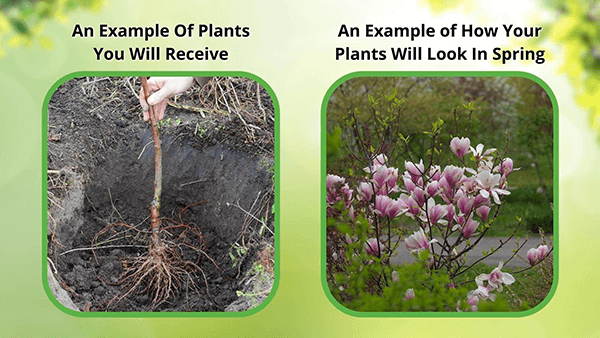American Arborvitae
American Arborvitae
| Order | Percentage Discount | ||
|---|---|---|---|
| 2-5 | 25% Off | ||
| 6-10 | 30% Off | ||
| 11-25 | 35% Off | ||
| 26-50 | 45% Off | ||
| 51+ | 65% Off | ||
Couldn't load pickup availability
Mid-February
Under 25 Feet
Sun or Shade
3-7
Evergreen
Bare-root
American Arborvitae - Thuja Cccidentalis
American Arborvitae is a coniferous evergreen tree native to eastern North America. It is a famous ornamental tree used as a hedge or screen plant in landscaping. In addition to its aesthetic value, it has several practical uses.
A Tree With Many Uses
The wood is light and soft, making it helpful in making pencils and constructing items such as shingles, poles, and fence posts. It is sold in multiple sizes, from tiny seedlings to giant trees, and is relatively easy to grow and maintain.
American Arborvitae's Requirements
When planting, choosing a location that receives full sun to partial shade and has well-draining soil is essential. The tree requires regular watering and benefits from occasional pruning to maintain its shape and promote healthy growth.
Where To Plant
It also requires full sun to thrive, so you should plant it where it can get 6 hours of direct sunlight daily. When selecting a planting site, ensure enough space for the tree to grow to its mature size. They can grow up to 30 feet tall and 10 feet wide, so keep that in mind when choosing a location. Overall, the ideal location for planting them would be in a spot that receives full sun and has well-drained soil with plenty of organic matter.
This local evergreen is a persevering, adaptable example. Its restricted pyramid shape makes it the obvious choice for windbreaks. It requires no consideration when utilized as a support or screen. Sets of these strong trees make extraordinary accents for entryways and garden doors.
Single trees make house corners seem much less glaring. Tall and exquisite, this tree might be the correct answer for your exterior design. They develop to a tallness of 40- 60' and a spread of 10- 15' at development.
American Arborvitae's Growth
This tree grows slowly, with one to two feet yearly growth rates. The full sun is perfect for this tree, meaning it should get no less than six hours of direct, unfiltered daylight daily. They develop well in acidic, loamy, clammy, rich, sandy, silty topsoil and very much depleted, wet soils.
This tree: • Features minor, scale-like leaves pressed firmly together in segmenting lines on branchlets, showing in a straightened, fan-like shower. The leaves change from brilliant green in the mid-year to a considerable number of rich yellow and dark-colored green tints in the winter, Giving sanctuary in the winter and settling locales for grackles, robins, and house finches in the mid-year, cottontail rabbits, snowshoe hares, deer, and an infrequent moose additionally peruse this evergreen.
Red squirrels and birds, such as pine siskins, eat the seed. Arborvitae is a Latin form of the French "l'arbre de vie," which means "tree of life." Linnaeus, the Swedish botanist who assigned the Latin name to this species, picked up on other traits. Pressing the evergreen leaves discharges a fragrance known far and wide as nature's aroma.
America arborvitae was valuable in early kayaks and prescriptions and became the principal North American tree acquainted with Europe. The explicit name occidentalis signifies "west," the bearing from Sweden where this tree was found.
This Is How Your Plants Will Look upon Delivery
Shipping date depends on the date displayed and chosen when you order from the product's page.
We only accept returns on plants verified dead. If you think your plants have died, we offer a 1 year warranty, please use use this File a Claim Link to verify dead plants and start with return warranty process.



American Arborvitae






